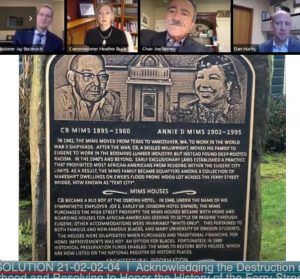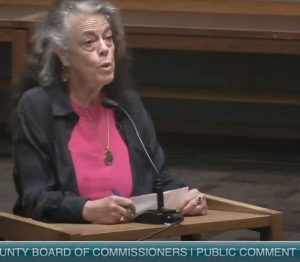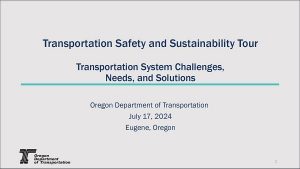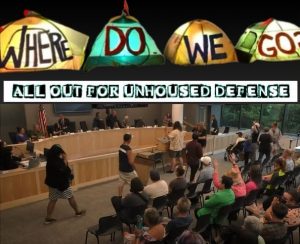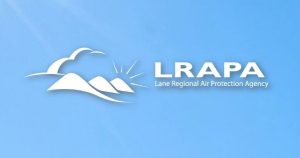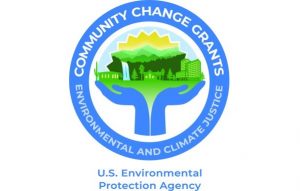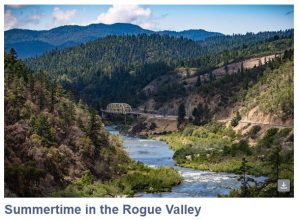Todd Boyle: The city can develop or impair human potential
8 min read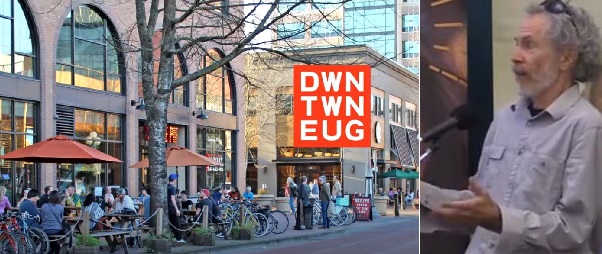
Todd Boyle: What the urban renewal district is, is there’s a map that’s been published by the city. And this is a complex, long-running conversation that’s been going on for at least since 2016, when the council authorized and allocated funds for the renovation of the downtown LCC building.
[00:00:16] There was an amazing congruence between the comments, many from the Downtown Eugene Association and other interest groups.
[00:00:22] Rob Bennett: The urban renewal district within downtown is really the worst performing and arguably the least safe area.
[00:00:29] Josh Burstein: I’m concerned about the present and future of Downtown Eugene. This area is hurting.
[00:00:33] Brittany Quick-Warner: Right now, our downtown is honestly, at its lowest point in decades. We do not believe it’s thriving. The vacancy rates, the crime, the general sentiment around downtown from stakeholders and community members are pretty alarming.
[00:00:47] Vickie Cussins: With the current state of many buildings in the core being empty or dwindling, and the number of unhoused people increasing, our colleagues don’t feel safe to leave the building.
[00:00:57] Katie Hall: Currently, downtown is not thriving, and while there have been substantial investments, they seem to be outweighed by the behavioral issues that make people feel unsafe, uninterested and avoidant of the heart of our city. We have employees that are afraid to walk to and from work. It is an issue, and we have to look for other ways to be able to make sure that they can get there.
[00:01:19] Megan O’Connor: Right now, Downtown Eugene is not a healthy neighborhood.
[00:01:23] Kim Arscott: The key areas of concern are dim vandalized alleys which are dirty, and sidewalks, and there’s no children downtown anymore.
[00:01:30] Katie Wilgus: Our downtown is not thriving. If we aren’t thriving, neither is the rest of the city.
[00:01:37] Todd Boyle: (Singing) The downtown is collapsing. People don’t feel safe. We need more market housing. There’s too much affordable housing downtown.
[00:01:56] So basically the gentry in this town want to build nice subsidized units for people who can afford to pay $1,500 a month and live right next to the downtown. And they don’t want any more stinking low-income people, and they don’t want any more stinking low-income housing, especially not downtown. Take it all out on Highway 61, as Dylan used to sing.
[00:02:20] One of the ironies is that the urban design of downtown has been guided by the city itself for 25 or 30 years. And in 2019, the director of the Planning Department, Denny Braud, he did a one-hour presentation of over 100 buildings that the city is proud of, that they were able to construct downtown. They demolished the old walking zone and made it into buildings. And they were proud of everything that they’ve done, you know, and, I have to say, there’s a video of this online that I recorded, that was the City Club.
[00:02:56] Eric Richardson (Oct. 4, 2019): Welcome to the City Club of Eugene, October 4, 2019 program, ‘Downtown Achievements.’ This is the fifth program of our 2019-2020 programming year. My name is Eric Richardson, and I serve as the president of the City Club of Eugene.
[00:03:15] Todd Boyle (Oct. 4, 2019): My name is Todd. I’m a recent member of the City Club. Get to ask my own questions now. What I see downtown doesn’t fully reflect my values and I don’t really know how to explain this, but I went and tried to read about the Greek concept of the polis. And the polis had at the center sacred places like temples, public forums; this sort of thing was the heart of the downtown.
[00:03:35] And so they had a different concept of what a human being is. And the downtown doesn’t reflect my values. I don’t—it’s too expensive. And I mean, the Oregon Country Fair is evidence that there’s a huge number of people in Eugene who wouldn’t build it this way.
[00:03:50] So are you satisfied with the cultural accomplishment or the human aspect of what you’ve built downtown? Are you happy with that or what would be your response?
[00:03:58] Denny Braud (Planning and Development director, Oct. 4, 2019): It’s a good question. Interesting question. I’ve always seen downtown as a people place. You know, I think in our history there’s been moments where we’ve maybe focused on getting rid of people downtown, for example.
[00:04:10] My goal has always been: ‘We need to bring more people downtown.’ All kinds of people. A full spectrum of people downtown. That’s really what the whole downtown is, a gathering place. We talk about downtown being everyone’s neighborhood, for example. It’s the place where the entire community should come to celebrate, and to be entertained, and all of those things.
[00:04:32] I think we’ve done a pretty good job. I mean, we’ve introduced affordable housing downtown. I think the whole ‘Town Square’ concept is, the idea is really to bring a diverse group of people. Thinking about the folks who come to the Farmer’s Market, for example: There’s an opportunity to really enhance that and make that a showcase of our community. We already have the Saturday Market downtown, obviously, and the Farmer’s Market, but have a really iconic place where more of our community get to experience downtown.
[00:05:00] When we talk about housing, for example, it’s one of our interests in kind of having a mixed-income housing project is to bring a more diverse group of people into our downtown. Have we gotten there yet? I don’t think we’re already all the way there, we still have work to do, but I think we’ve done some good things.
[00:05:17] Todd Boyle (May 2023): The song that I sang was like ‘singing to the choir,’ right?
[00:05:21] (Singing) Downtown is collapsing. People don’t feel safe. There’s too much affordable housing downtown. We need to build a bunch of expensive housing with people who can afford to buy stuff.
[00:05:40] That’s really what they were all saying.
[00:05:42] In fact, the results of the charrettes, these six priorities, they don’t include a list of projects at all. But the six categories include Housing, Public Safety, Social Services, Commercial Activity and Development, Public Spaces and Mobility, Events and Culture. Basically, these came out of a whole bunch of charrettes and workshops, they selected 90 stakeholders, you know, the things the city does.
[00:06:07] The biggest priorities by far of all the hundreds of people who participated was behavioral and mental health and addiction. And they wanted services to address this, and public safety initiatives, things like CAHOOTS, things like a crisis center, right, where you can drop people off instead of the emergency room. And these are the sorts of things that can reduce the numbers of crazy people walking around, you know, troublemakers and stuff.
[00:06:32] Another thing that kind of bugged me was these six priorities. Somehow it reminds me of the six blind men and the elephant. And the elephant is the amount of money that’s possible to be allocated for different priorities.
[00:06:42] Every time I read this stuff, it seems like I myself become one of the different blind men. Last year I thought, ‘Oh, we’ve got to have housing,’ and so every time I’d look at this, I’d look at it in the lens of getting some cheaper housing.
[00:06:53] And now this year I look at the same elephant and I’m looking at it in terms of, what really needs to be provided is an actual treatment center. In other words, a building full of mental health counselors, psychiatrists, and an open door policy for anybody who wants help.
[00:07:08] We don’t even help people who want help, let alone the people who we would have to kind of put them in there, you know? But anyway.
[00:07:14] Of the six priorities, one of them was Social Services. And within Social Services, the number one item is: Expand behavioral health crisis and addiction services in downtown, including proactive outreach and create a physical location.
[00:07:31] In other words, create a place and then go out and get the people and put ’em in the place.
[00:07:38] An earlier rendition said ‘Develop an addiction and mental health services facility.’ That’s not a crisis drop-in center. This item within social services morphed from basically a long-term service where people could come to group every day, or something of that nature, and now it’s a crisis drop-in center where it’s part of law enforcement, really, is what it sounds like to me.
[00:07:59] Our notion of: What is the nature of a city? What is the purpose of a city? What is human? What’s the human potential?
[00:08:06] I feel that humans develop in society as a group anima, and a city can facilitate this or it can impair it.
[00:08:15] For example, it impairs the potential of the society if groups of people like the homeless are oppressed, made unwelcome, not allowed to participate in public places, or in the social, cultural, religious, or political spheres.
[00:08:31] And so what they have done with the preexisting notion of downtown that has actually been built, the built urban structure that was described by Denny Braud in his 2019 presentation at the City Club, which now is turning out to be, that’s not working, with a lot of commercial buildings and a lot of retail space taking away walkable spaces like the old plaza downtown, reintroducing automobile traffic on all the streets, building big parking structures.
[00:08:58] I’m not saying that it’s bad or that it’s the worst structure that you can have for the development of everyone’s human potential, but it needs improvement. It needs a complete rethink.
[00:09:09] And that’s the results of the big groups that the urban renewal district and the city have been doing. It shows the concerns that people have that are not really optimally being delivered by the existing built infrastructure.
[00:09:23] Denny Braud, in 2019:
[00:09:26] Denny Braud (Oct. 4, 2019): …We’re working on a new Town Square which is really exciting. It’s really a re-imagining of our Town Square, a new home for the Farmer’s Market, a home for City Hall. I think if you go back 100 years in time that was really the kind of the path we were on for a Town Square. And then over time it got chopped up and we built a parking garage on our Town Square and things like that. So this is another ‘Back to the Future’ moment where I think we have to go back in time, learn that maybe we shouldn’t have done a few of those things.
